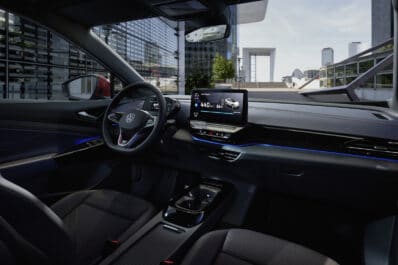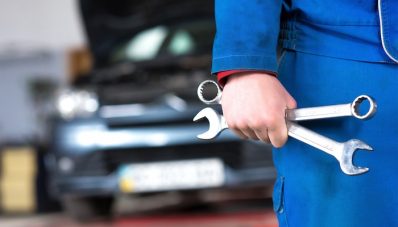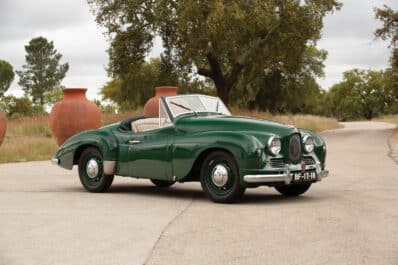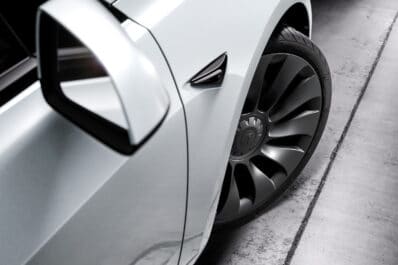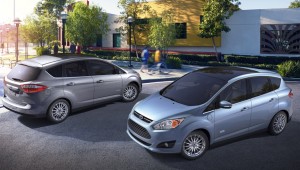
When Ford launches its new C-Max hybrid microvan later this year it will deliver a solid 47 mpg in the EPA’s combined city/highway test, making it one of the most fuel-efficient vehicles on the road. Yet that’s still about 15% short of the target the White House has set for the auto industry with the new mileage standards that will be phased in between now and 2025.
Most major automakers signed onto the compromise regulations announced last year and officially released on Tuesday. But most echo John Krafcik, the CEO of Hyundai Motor America, who admits “We don’t yet know how we’ll get there.”

Electrification will almost certainly play a role, in some form or another. But don’t expect to see America switch to battery cars, most industry analysts contend. The technology will likely remain too limited and too expensive over the next dozen years – and the infrastructure just won’t be there, contends Jim Hall, of 2953 Analytics.
And don’t believe skeptics, he says, who think the new rules will force us all into microcars like the British Mini, Italian Fiat 500 or the 2-seat Smart fortwo.
But there’s no question, there’ll be a lot of changes and a lot of new technology required, some of it yet to be invented, much of it to be substantially improved.
“The most recent set of regulations provide aggressive goals that will stretch technology to meet these tough new standards and demand long-term commitment from automotive manufacturers and their suppliers,” stressed Lawrence W. Kavanagh, president of the trade group the Steel Market Development Institute.
Some experts believe the auto industry will be forced to abandon that familiar material, switching to lighter alternatives such as carbon fiber or aluminum. The latter is in increasingly widespread use, especially on high-end products such as the Jaguar XJ sedan, but even more mainstream manufacturers are expanding their use of aluminum if for nothing else than in door panels, deck lids or suspension components.
Carbon fiber, familiar to Formula One racing fans and exotic car aficionados, is often seen as the Holy Grail, but it is difficult to work with and phenomenally expensive. Breakthroughs are coming. McLaren has cut by more than 90% the time it takes to produce carbon fiber components. And BMW is investing heavily in CF research.
But steel is fighting back and groups like the Steel Institute have been developing new alloys that are markedly lighter and stronger – which requires substantially less mass for a given job.
Weight is clearly the enemy and manufacturers are looking for any way possible to cut it down. That might even mean eliminating some relatively unused accessories, such as the ever-present CD player – which adds about 4 to 5 pounds a vehicle.
That underscores a big issue facing industry designers and engineers. Even as they cut weight through new materials and better designs they face government pressure to add more structure and equipment to improve safety; and consumers keep demanding more “toys,” such as dual rear seat video screens.
The traditional gasoline engine has also proved tougher than expected to walk away from. New technologies such as direct injection have yielded substantial increases in efficiency even while delivering more power. The 2012 Porsche 911, for example, increased mileage 16% even as it boosted horsepower to 350.
DI is only part of the solution, however. The new model adopted a variety of technologies such as stop/start – which automatically shuts the engine down rather than idling, the powertrain firing back up when the driver’s foot lifts off the brake. That technology is going into increasingly widespread usage and should boost mileage anywhere from 3% to 8%, depending on the vehicle.
In use on the little 500, Fiat has developed a technology it calls MultiAir that radically alters the way the engine’s intake valves operate. Instead of being mechanically linked to the camshaft they are regulated by the electronic engine controller – which can vary when and how much air and fuel they allow to enter the cylinders. Variations of this theme are being used on everything from exotic sports cars to down-market models like the new Mazda CX-5.
Aerodynamics are also crucial, and manufacturers are going to extremes to cheat the wind. In developing the new Dodge Dart, for example, engineers all but completely sealed off the sedan’s underbody. They also added grille shutters that can block air from entering the engine compartment, a major source of drag, improving aero performance by more than 3%.
Some experts anticipate we’ll see even more active aerodynamic technologies, such as movable rear wings and front spoilers, perhaps even body panels that flex depending on the vehicle’s speed.
To get to as much as 42 mpg in its highway rating Dart also offers an optional D-DCT transmission, a so-called double-clutch gearbox also derived from racing technology. Think of it as an electronically-shifted manual.
Seven and eight-speed gearboxes have become a near-norm, allowing an engine to operate at peak efficiency at all times. Chrysler plans to add a 9-speed next year when it replaces the old Jeep Liberty, and CEO Sergio Marchionne would like to use that design on all of his front-wheel-drive models.
Nissan has long been a proponent of fuel-saving CVTs, or Continuously Variable Transmissions, like the one in the new Altima. The technology hasn’t worked out for some makers, consumers complaining about the so-called “rubber-banding” that occurs as an engine revs up while the vehicle itself strains to catch up. But the problem has largely been overcome with Nissan’s latest CVTs and Honda promises to make further improvements with the launch of the all-new 2013 Accord.
The new CAFE standards likely won’t eliminate full-size trucks. And even muscle cars might be able to stick around in smaller number – though they could become “as rare as white flies,” warns Chrysler CEO Sergio Marchionne.
The traditional V-8 – and even the V-6 will likely give way to smaller engines. Volvo, for example, plans to switch to an all-four-cylinder line-up by decade’s end. But those won’t be the same I-4s you once knew. Expect to see all the new features mentioned above as well as advanced turbocharging that can help a three-liter I-4 punch out the power and torque of a classic 8-banger.
Turbos have pumped new life into the diesel — which now accounts for about half of all new vehicle sales in Europe. And “oil burners” are gaining ground here, as well. Jonathan Browning, CEO of Volkswagen Group of America, is betting diesels may soon account for nearly a third of the VW Passats sold in the States. Mazda and Chevrolet are soon to add diesels in their own passenger car line-ups.
Electrification is all but certain to play a growing role, however. But that covers a broad range from the “mildest” of hybrids to full-fledged electric vehicles such as the Nissan Leaf.
The new Mazda6 introduced in Moscow this week will use a system called e-Loop, which relies on a device called an ultracapacitor to store energy normally lost in braking and coasting. That will, in turn, help run the sedan’s various electrical and electronic systems.
Virtually every maker now offers at least one conventional gas-electric hybrid – most notably the Toyota Prius. Some are toying with even more efficient diesel-hybrids. Plug-in hybrids, such as the Chevrolet Volt and a version of the Ford microvan to be dubbed the C-Max Energi, will be commonplace well before the 2025 CAFE standard takes effect. How many pure battery-electric vehicles will follow, as well, is uncertain. The technology is wildly expensive – though coming down in price – and suffers from limited range. But breakthroughs could come before the middle of the next decade.
The key to getting to the 54.5 mpg number will be to integrate as many of these technologies – and others to come, as possible, according to John Kasab, chief engineer at auto supplier Ricardo, Inc.
Indeed, with its new SkyActiv technology, Mazda has gone so far as to redesign the impeller blades in its water pumps and changed the design of its lug nuts to make them lighter and more efficient.
The new CAFE rules won’t be easy to meet – and they won’t come without a price – but the industry is already showing it knows the right direction to get there.



